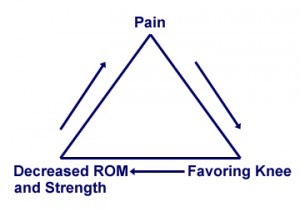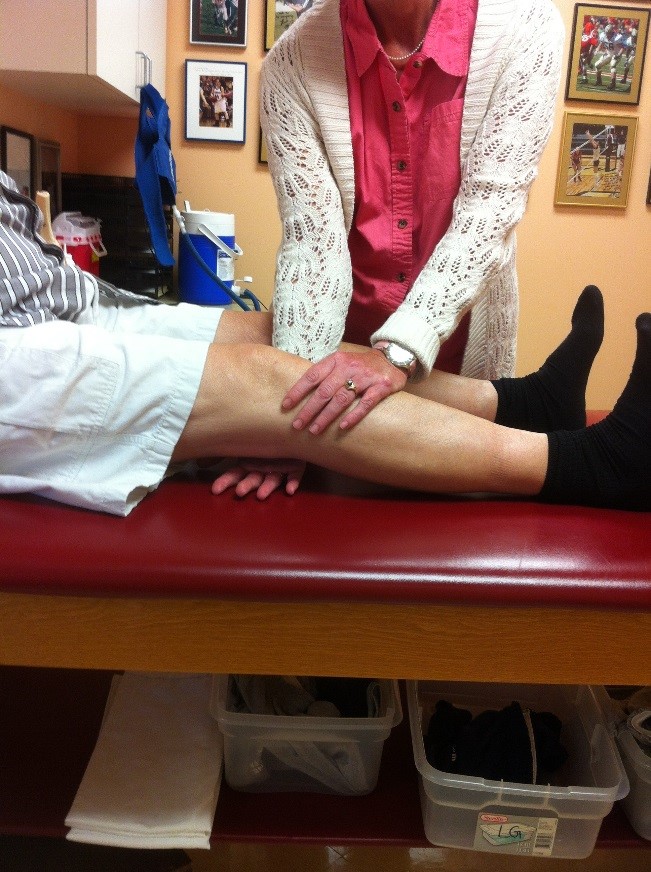What is Deconditioned Knee?
Knees work best when they have full range of motion and strength and when both knees are equal. Range of motion is your ability to straighten and bend your knee. Another important concept that is often overlooked is symmetry. The right and left knee should have the same range of motion (ROM) and strength when compared to one another. An injury or pain in the knee may cause a person to favor on knee over a period, using the painful knee less. They may:
- Stand with their weight shifted away from the painful knee.
- Use the uninvolved knee more when walking, squatting, and climbing stairs.
Over time, this can cause a significant decrease in the strength and range of motion in painful knee, therefore becoming deconditioned. Consequently, decreased strength and range of motion (ROM) can lead to further pain. Increased pain causes the person to favor their knee more, which perpetuates the cycle.

Causes of Deconditioned Knee
A deconditioned knee can be caused by knee pain, injury, or by improper rehabilitation after an injury or surgery.
What are the Symptoms of Deconditioned Knee?
Recognizing the symptoms of a decondition knee requires a thorough knee examination. A good knee examination requires the patient to wear shorts that expose the knee and thigh adequately to be able to see if there is a difference between knees. Both knees should be examined.
Symptoms of deconditioned knee include:
- Decreased knee extension compared to the normal knee, to include evaluation of normal hyperextension.
- Decreased knee flexion compared to the normal knee.
- Pain.
- Stiffness.
- Weakness.

Patient has a deconditioned left knee that has lost normal knee extension.
How is Deconditioned Knee Treated?
Physical therapy, or rehabilitation, is an effective treatment for deconditioned knee. Other treatments include over-the-counter pain medicines and corticosteroid shots.
Physical Therapy for Deconditioned Knee
At Shelbourne Knee Center, physical therapy focuses on improving your range of motion (the ability to extend and bend your knee) and restoring strength and function.
- Exercises to regain full hyperextension are prescribed first.
- Once full and symmetric hyperextension is reached, the flexion exercises will be issued.
- After the patient’s range of motion is maximized, physical therapy will focus on low impact strength and conditioning exercises.
Each patient has a personal physical therapist or athletic trainer, who guides you in doing the therapy. You will complete most of the physical therapy at home, with periodic visits to Shelbourne Knee Center.
Other Non-Surgical Treatments for Deconditioned Knee
Over-the-counter pain medicines and corticosteroid shots are other non-surgical treatments for deconditioned knee.
Pain medicines
Over-the-counter pain medicines relieve pain and inflammation from deconditioned knee. Pain medicines include:
- Ibuprofen (Advil, Motrin, or others)
- Naproxen (Aleve or others)
Corticosteroid shots
Corticosteroid shots help relieve pain and inflammation in the knee. The medicine in these shots is usually a corticosteroid medication and a local anesthetic. They are also called cortisone shots or steroids.
